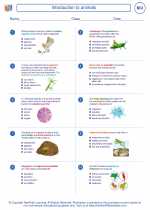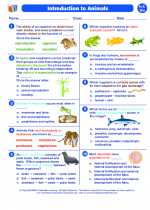Pseudopodia: Definition and Function
Pseudopodia are temporary protrusions of the cell membrane and cytoplasm found in certain types of cells, particularly in some protozoa and white blood cells. The term "pseudopodia" is derived from the Greek words "pseudo," meaning false, and "pous," meaning foot. These structures are involved in cell movement, phagocytosis, and feeding.
Types of Pseudopodia
There are two main types of pseudopodia:
- Lobopodia: These are large, blunt, and rounded extensions of the cell body, commonly found in amoeboid cells. They are involved in both locomotion and engulfing prey through phagocytosis.
- Filopodia: These are thin, thread-like extensions that extend from the leading edge of the cell. They are involved in cell movement and sensing the environment.
Function of Pseudopodia
Pseudopodia play several important roles, including:
- Cell Movement: By extending and retracting pseudopodia, cells can move in a process known as amoeboid movement.
- Phagocytosis: Pseudopodia are used to engulf and ingest particles, such as food or pathogens, in a process known as phagocytosis.
- Sensing the Environment: Filopodia are involved in sensing the chemical and physical environment surrounding the cell.
Study Guide: Understanding Pseudopodia
To understand pseudopodia, consider the following key points for study:
- Define pseudopodia and describe their structure and composition.
- Explain the roles of pseudopodia in cell movement, phagocytosis, and sensing the environment.
- Compare and contrast lobopodia and filopodia in terms of their structure and function.
- Discuss the importance of pseudopodia in the immune response, particularly in white blood cells.
- Illustrate the process of pseudopodia formation and retraction using diagrams or animations.
By understanding the structure and function of pseudopodia, you can appreciate their importance in various cellular processes and their significance in the behavior of different cell types.
.◂Biology Worksheets and Study Guides High School. Introduction to animals
Worksheet/Answer key Introduction to animals
Introduction to animals  Worksheet/Answer key
Worksheet/Answer key Introduction to animals
Introduction to animals  Worksheet/Answer key
Worksheet/Answer key Introduction to animals
Introduction to animals  Worksheet/Answer key
Worksheet/Answer key Introduction to animals
Introduction to animals  Vocabulary/Answer key
Vocabulary/Answer key Introduction to animals
Introduction to animals  Vocabulary/Answer key
Vocabulary/Answer key Introduction to animals
Introduction to animals  Vocabulary/Answer key
Vocabulary/Answer key Introduction to animals
Introduction to animals 

 Worksheet/Answer key
Worksheet/Answer key
 Worksheet/Answer key
Worksheet/Answer key
 Worksheet/Answer key
Worksheet/Answer key
 Vocabulary/Answer key
Vocabulary/Answer key
 Vocabulary/Answer key
Vocabulary/Answer key
 Vocabulary/Answer key
Vocabulary/Answer key

The resources above cover the following skills:
Concepts of Life Science (SC1, SC2, SC3)
The student demonstrates an understanding of the structure, function, behavior, development, life cycles, and diversity of living organisms by describing the structure-function relationship